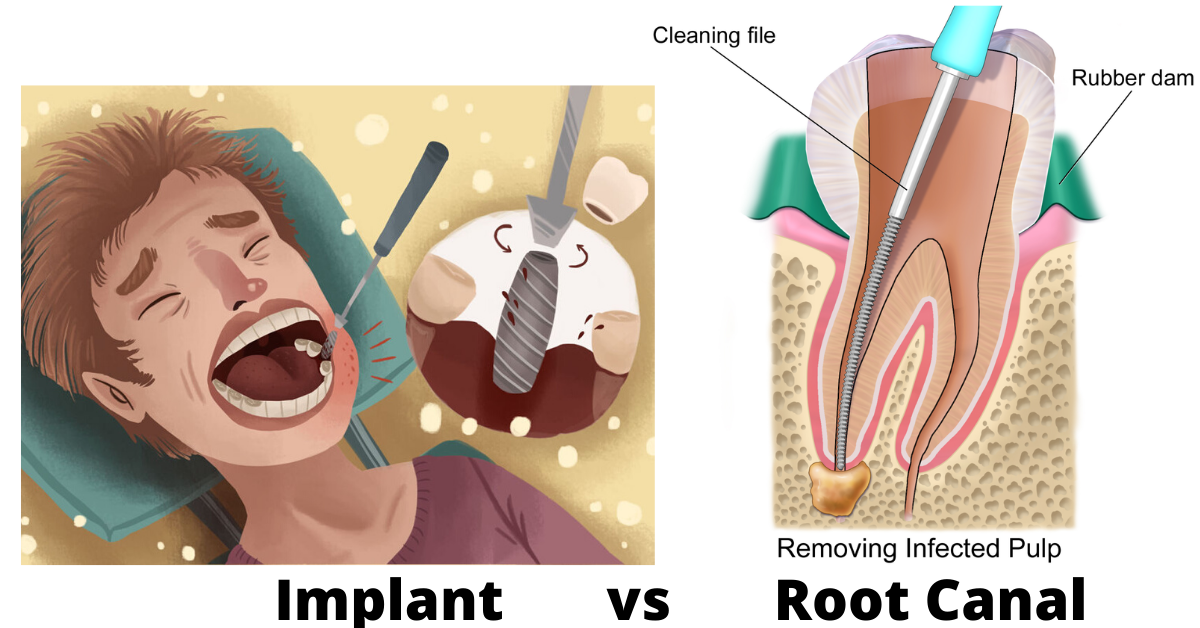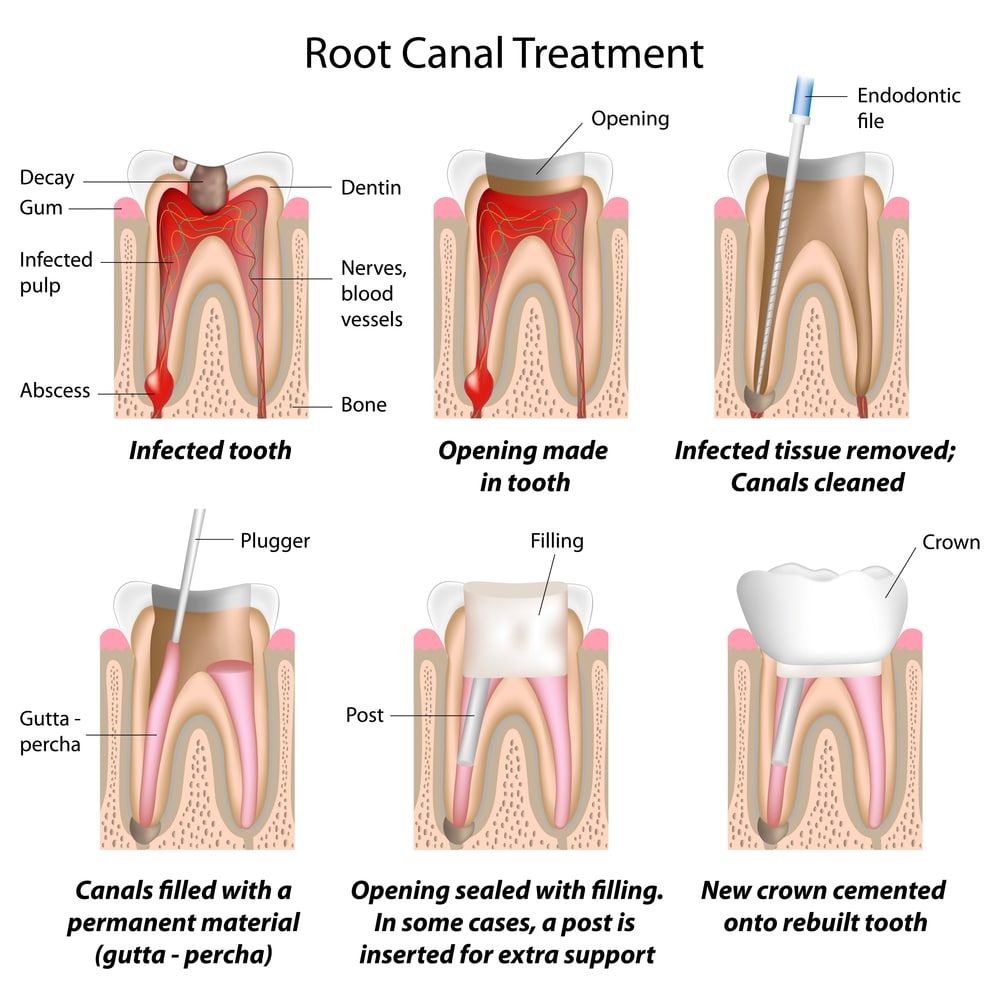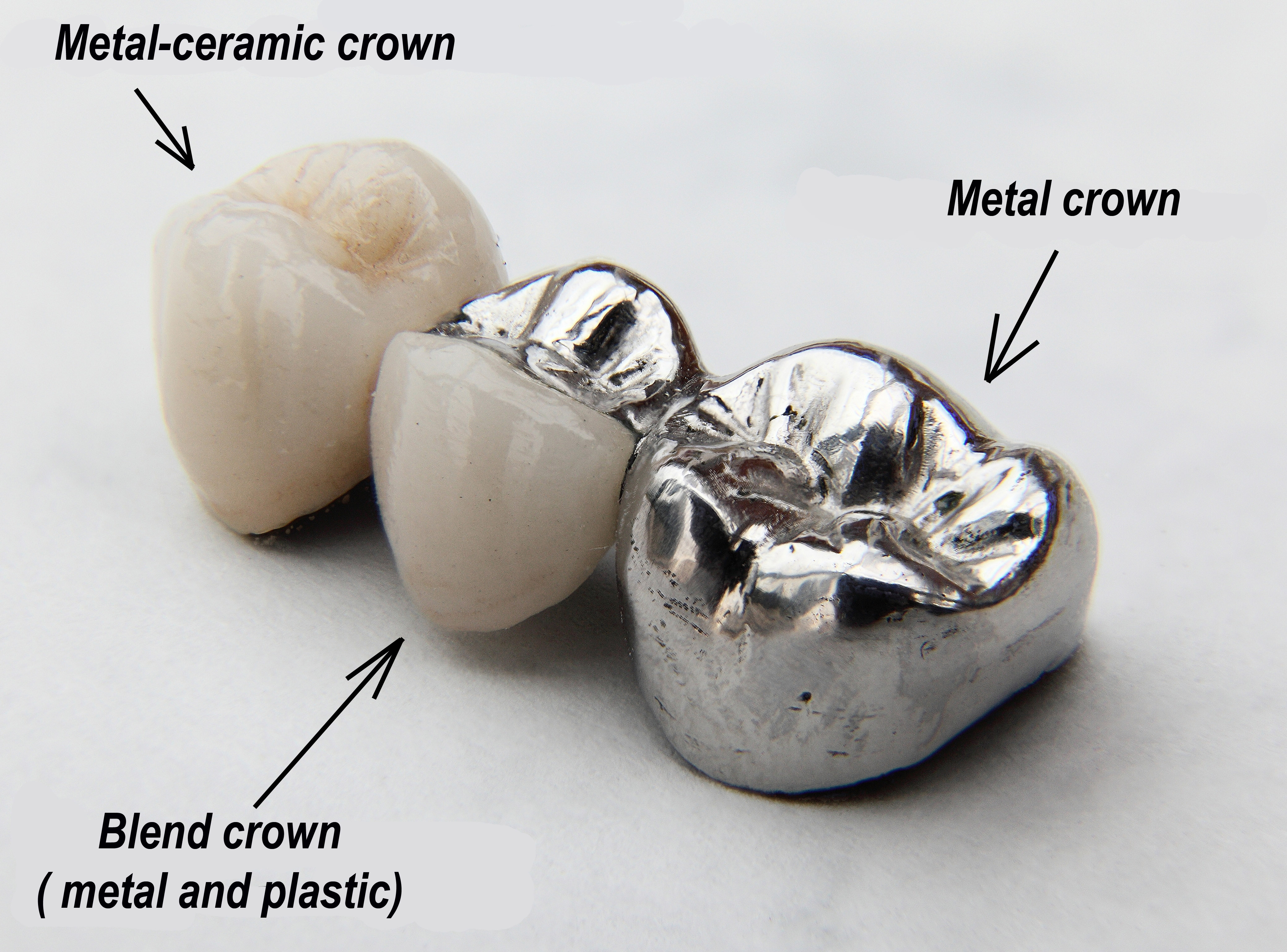Root Canal And Implant

When it comes to preserving the health and integrity of our teeth, two procedures stand out for their significance and complexity: root canal therapy and dental implant placement. While they serve different purposes, both are critical in modern dentistry, offering solutions to common dental issues that can significantly impact an individual’s quality of life. This discussion will delve into the details of each procedure, exploring their purposes, processes, benefits, and how they interact within the broader context of dental health.
Understanding Root Canal Therapy
Root canal therapy, also known as endodontic therapy, is a procedure designed to save a tooth that has been severely damaged due to decay, crack, or trauma. The primary goal is to remove the infected or damaged pulp from the tooth’s root canal, thereby alleviating pain and preventing further complications such as abscesses. The pulp, which consists of nerves, blood vessels, and connective tissue, can become infected due to deep decay, cracks, or trauma. When this happens, the pulp begins to die, leading to pain, swelling, and potentially more severe infections.
The root canal process involves several key steps: 1. Access and Examination: The dentist gains access to the pulp chamber through the crown of the tooth and examines the root canals for any signs of infection or damage. 2. Cleaning and Shaping: The dentist uses specialized instruments to clean the root canals, removing the infected pulp tissue. The canals are then shaped to receive a filling material. 3. Filling: The cleaned and shaped canals are filled with a biocompatible material, usually gutta-percha, to prevent further contamination. 4. Restoration: After the root canal is completed, the tooth is typically restored with a crown or filling to protect it from fracture and restore its function.
Understanding Dental Implant Placement
Dental implants offer a revolutionary solution for missing teeth, providing a durable, long-lasting alternative to traditional dentures or bridges. An implant consists of a titanium post that is surgically placed into the jawbone, acting as the root of the missing tooth. Once integrated into the bone, the post supports a crown, bridge, or denture, restoring the tooth’s natural appearance and function.
The process of placing a dental implant involves: 1. Planning and Consultation: This includes evaluating the patient’s suitability for an implant, discussing expectations, and planning the procedure. 2. Surgery: The implant post is surgically placed into the jawbone under local anesthesia. 3. Osseointegration: The implant is left to integrate with the jawbone over several months, a process known as osseointegration. 4. Abutment and Crown placement: After integration, an abutment is attached to the implant post, and a crown is placed on top, restoring the tooth’s functionality and aesthetics.
Interaction Between Root Canal and Implant Placement
In some cases, root canal therapy and dental implant placement can be related. For instance, if a root canal-treated tooth fails due to fracture or further decay, it might be necessary to extract the tooth. In such scenarios, a dental implant can be considered as a replacement option. Conversely, if a tooth is deemed non-restorable and needs to be extracted, planning for an immediate or delayed dental implant placement might begin concurrently with the extraction.
Comparative Analysis: Root Canal vs. Implant
| Criteria | Root Canal Therapy | Dental Implant Placement |
|---|---|---|
| Purpose | Save a damaged tooth by removing infected pulp | Replace a missing tooth with an artificial root and crown |
| Procedure | Less invasive, involves removal of pulp tissue | More invasive, involves surgical placement of a titanium post |
| Recovery | Generally quick, with some post-procedure discomfort | Requires a healing period for osseointegration, which can take months |
| Success Rate | High success rate, especially if performed early | Extremely high success rate when proper criteria are met and maintained |
| Cost | Can vary, but generally less expensive upfront | More expensive upfront, but can last decades with proper care |

Decision Framework for Choosing Between Root Canal and Implant
The decision to opt for root canal therapy or dental implant placement depends on several factors, including the tooth’s condition, the patient’s overall health, personal preferences, and financial considerations. Here’s a simplified framework for decision-making: - Assess the Condition of the Tooth: If the tooth is salvageable and the pulp is not extensively damaged, root canal therapy might be the preferred choice. - Evaluate the Patient’s Health: Certain health conditions, such as uncontrolled diabetes or smoking, can affect the success of both procedures but might be more critical for implant success. - Consider Aesthetics and Functionality: Both procedures can offer satisfactory outcomes, but implants are often praised for their natural look and feel. - Financial and Insurance Considerations: Weigh the costs and potential insurance coverage for both procedures.
Future Trends and Implications
As dental technology continues to advance, we can expect to see improvements in both root canal therapy and dental implant placement. For instance, the use of laser technology in root canal treatments can enhance precision and reduce healing times. In implant dentistry, innovations in implant design, surface modification, and the use of digital workflows (such as CAD/CAM) for prosthetic manufacturing can improve success rates, reduce procedure times, and enhance patient satisfaction.
Conclusion
Root canal therapy and dental implant placement are two distinct but complementary procedures in modern dentistry. While they address different issues, their goals align with preserving dental health and enhancing the quality of life for patients. Understanding the purposes, processes, benefits, and considerations for each procedure can empower individuals to make informed decisions about their dental care. As technology and techniques continue to evolve, the future of these treatments looks promising, offering patients more effective, efficient, and comfortable options for managing their dental health.
FAQ Section
What is the success rate of root canal therapy?
+The success rate of root canal therapy is generally high, with most teeth lasting for the rest of the patient’s life when properly restored and cared for. However, success can depend on various factors, including the tooth’s location, the extent of the infection, and the patient’s overall health.
Can a tooth that has had a root canal be used for an implant if it fails?
+If a tooth that has undergone root canal therapy fails, it may still be possible to place a dental implant in its place. However, the success of the implant can depend on the condition of the bone and surrounding tissue. In some cases, additional procedures such as bone grafting might be necessary to prepare the site for an implant.
How long does it take to recover from dental implant placement?
+The recovery time from dental implant placement can vary, but most patients can return to their normal activities within a day or two after the procedure. The integration of the implant with the bone, known as osseointegration, can take several months. During this time, a temporary crown or prosthesis may be worn, and once osseointegration is complete, the final crown can be placed.
Are dental implants covered by insurance?
+Insurance coverage for dental implants can vary widely, depending on the insurance provider and the specific policy. In some cases, part or all of the procedure might be covered, especially if it’s deemed medically necessary. However, many insurance plans still consider dental implants an elective procedure, which can limit or exclude coverage. It’s essential to check with your insurance provider to understand the extent of your coverage.

